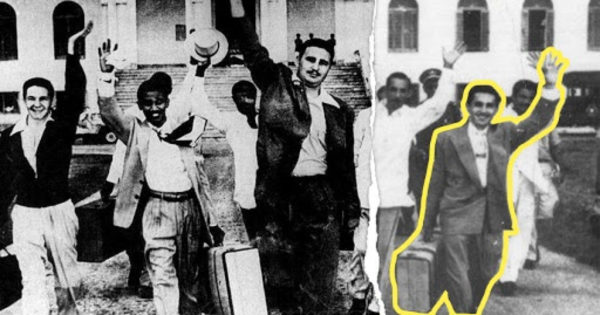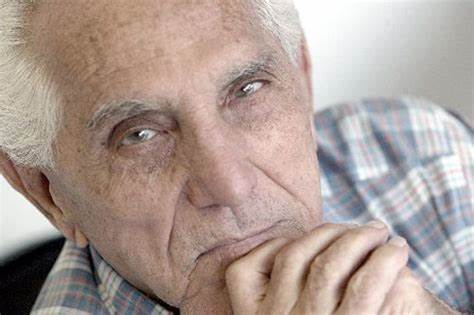On Cuban Independence Day

In memory of Mario Chanes de Armas, the longest-held Cuban political prisoner in contemporary history.
By Vicente Morin Aguado
HAVANA TIMES – Every February 24th, Cubans celebrate the beginning of our last war for independence in 1895. Before that, there were two others, the so-called Ten Years’ War, from 1868 to 1878, and the Little War, between 1879 and 1880.
Unlike in the USA, we didn’t wait to win the war to create a civilian government, governed by a constitution; we had four constitutions while fighting for freedom since October 10, 1868.
The architect of February 24th was Jose Marti, the founding father of our nation. Marti was a liberal democrat, equally sympathetic to the impoverished sectors of society. However, he opposed the Marxist idea of class struggle, condemning the possibility of the socialist state, calling it “future slavery”.
Just arrived in New York, he recounts his first impressions upon seeing the Statue of Liberty, in January 1880, at the young age of 27, in The Hour magazine:
“I am finally in a country where everyone seems to be their own master. One can breathe freely here, because freedom is the foundation, shield, essence of life. Here one can be proud of his species. I never felt surprised in any country I visited. Here, I was surprised.”
A decade later, he became the leader of the Cuban emigrants, creating the Cuban Revolutionary Party, focused on achieving independence, a means to found a republic “with all and for the good of all”, according to a banner phrase from his fiery speeches.
His vision of the country that had welcomed him evolved to balance admiration with a foresight against the geopolitical consequences of having a neighbor growing more powerful every day. He died just as military operations were beginning, whose final result would prove him right.
Victory against Spain was achieved when the Spanish garrison of Santiago de Cuba surrendered on July 16, 1898, after a two-week siege, where thousands of Cuban soldiers shed blood alongside their US counterparts, while the US fleet ruthlessly defeated a battered Spanish squadron at the entrance to the city within a few hours.
Under United States’ occupation, Cubans drafted a new constitution, whose articles improved upon those of the US itself, as it outlawed any privilege based on race or origin. However, they had to accept a constitutional appendix, voted on in the Capitol in Washington, the so-called Platt Amendment, which granted the US the power the right to intervene in Cuba’s destinies.
A sixth constitution was approved in 1940, after the Platt amendment had been repealed. This supreme law governed when on March 10, 1952, when a retired general, Fulgencio Batista, assumed de facto power, with the support of the armed institutions.
Then Mario Chanes, a unionist for trade workers, agreed to join the project led by lawyer Fidel Castro, whose essence was to seize the Moncada military fortress in Santiago de Cuba by force, initiating a popular movement capable of overthrowing the dictatorship.
In front of the attacked barracks, wounded by a bullet, Chanes obeyed Fidel’s order to retreat. Fugitives in the mountains, he agreed to surrender along with four other comrades to facilitate the leader’s escape. The swift arrival of the army frustrated the improvised idea. A total of 30 survivors were sentenced to prison for the events of Moncada.
Fidel Castro gained political notoriety by conducting his own defense as a lawyer, delivering a speech that became a denunciation against the Batista regime. The constitution contained an article that legitimized rebellion as a last resort against tyranny, a political principle derived from the United States Declaration of Independence, cited by Castro, justifying his actions.
The speech was later published under the title “History Will Absolve Me,” a program of struggle for an announced revolution, under the oath to restore the violated Constitution. The young lawyer became a national political figure.
In May 1955, a photograph shows Mario Chanes de Armas, suitcase in hand, to the right of Fidel Castro, being released from the Isle of Pines Prison, as the still dictator Batista decreed to an amnesty. Granma, the official organ of the Communist Party of Cuba, in its national print edition, later published this cropped image, attempting to erase him from history.

However, as the constitution awaited redemption, Chanes joined a new armed detachment that landed on the eastern coast of the island, coming from Mexico, on December 2, 1957. Most of the 82 men died or were captured by the army during their first combat, while Fidel, his brother Raul, and 15 others escaped to the Sierra Maestra mountains.
Chanes returned to prison until Batista’s flight on December 31, 1958, determined the triumph of the Bearded Ones from the Sierra Maestra. The dissolution of the army and the police determined that the new victorious armed force would become the quarry of the military institutions, under the command of Fidel Castro.
Chanes was given the rank of commander and a position in the police, but soon resigned from both positions because in February of that triumphant year, the rebel leader, Fidel, decided to indefinitely extend his mandate, renouncing future elections.
Working as a beer distributor, Mario Chanes was arrested on charges of “verbal conspiracy” to assassinate Fidel Castro, as stated in case # 556 of 1961. They found no material evidence of such an attempt. He always declared himself innocent.
While in prison, he learned of the death of his 22-year-old only son, his parents, and a brother, without attending their funerals. He received two visits a year, deprived of any telephone communication.
Perhaps his crime was that, conversing with friends, he used to repeat: “The right of the people is superior. If the constitution is violated, count on me to fight whoever violates it, with the powers I have.”
Mario Chanes died in Miami on February 24, 2007.

Currently, there are 1066 political prisoners in Cuba. (See [email protected]) 5313 political murders and/or executions have been documented since 1959, according to [email protected]





